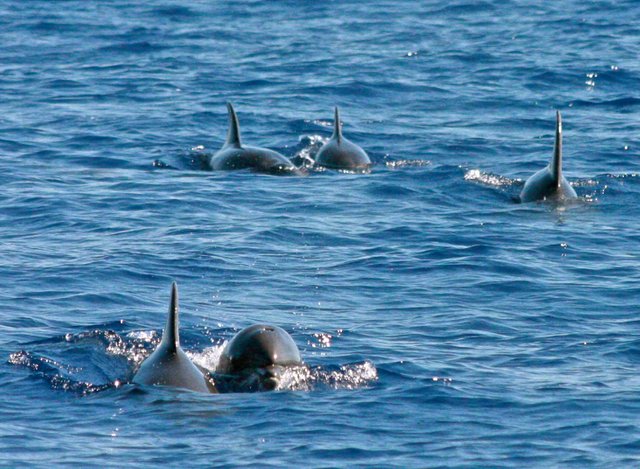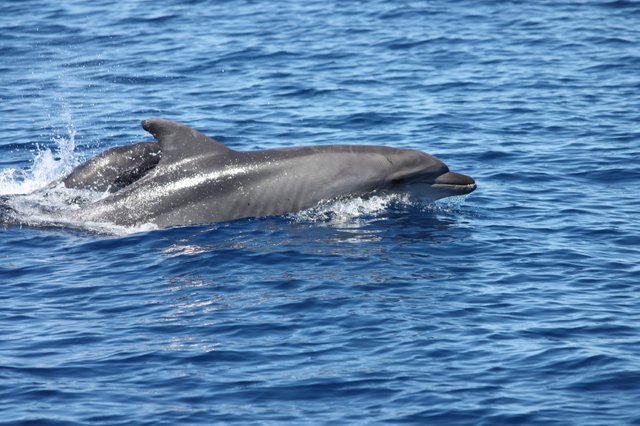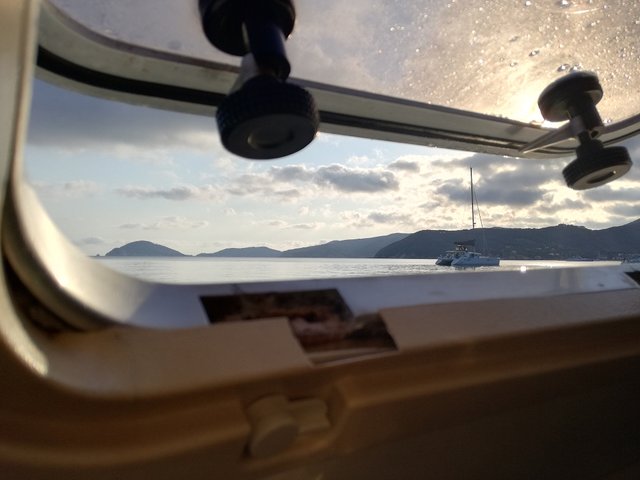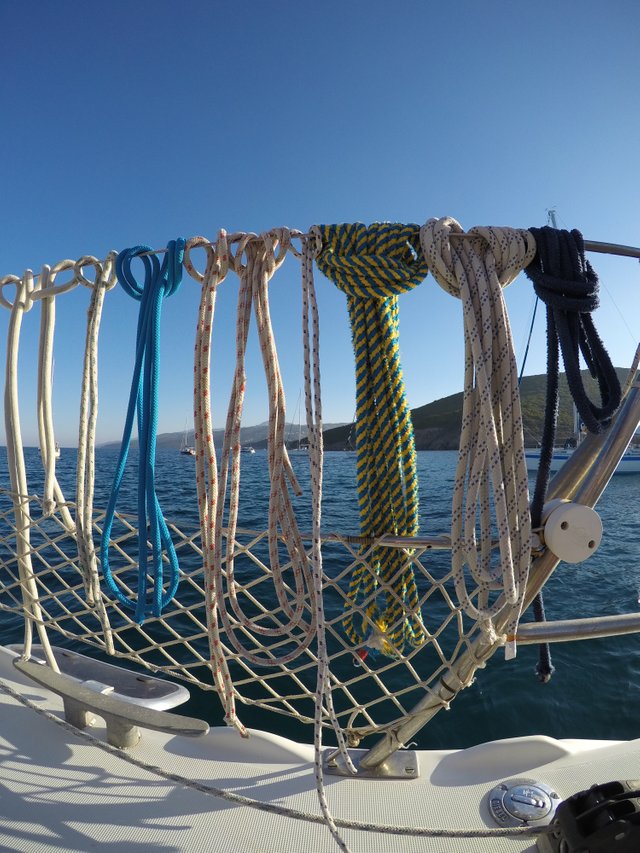Spaghetti on the sea - Cetaceans detection [ENG/ITA]
While a part of Spaghettiscience is struggling with the preparations for the journey that will take them to explore Iceland, another is ready to sail in the waters of the Mediterranean Sea, for a few weeks of research on cetaceans. It is never easy to tell what it's like to live an experience like that (also because a good part of the people to whom it is told is convinced that the activity consists in diving and swimming with dolphins); then we will try to transmit some concepts about this world that is still little known, but of fundamental importance to keep the cetacean populations living and transiting through the Mediterranean Sea under control. The experience that we will talk about is based on two research centers that perform a monitoring activity in different areas, and we will do so by participating in two different expeditions that will cover the span of two weeks; the first will begin on August 5 in the area of the Tuscan archipelago, while the second will take place on August 13, destination Ligurian Sea.

ORIGINAL SHOT BY SPAGHETTISCIENCE
Over time we have realized how for people, outside the natural environment, it is not immediate to think that in our sea there can be such a large biodiversity to include different species of cetaceans. Accomplice also the fact that, except for the lucky ones who have had the opportunity to meet them during special excursions or by boat, most of the tourists spend their holidays in the bare beaches poor in marine fauna that leave much room for relaxation and little exploration. For this reason, very often one finds oneself to be amazed and to consider exceptional events which, in reality, are the order of the day. A classic example is the uproar that a shark sighting in the Mediterranean Sea provokes, as if it were something extremely rare, even though it is a sea very populated by different species of sharks (just think of the Verdesca, Prionace glauca, until a few years ago it was also very common in the Adriatic). First of all, having seen some dolphins in freedom for the first time very far from Italy, I thought that to review them, and possibly study them, it was necessary to pack up and go abroad. But as sometimes happens in the best stories, after having looked for a long time elsewhere, it turns out that what we want is closer than we might think. And that is how one day the attention stopped on an announcement that advertised a monitoring activity of cetaceans in the Tuscan archipelago, and even before becoming aware of what we were doing, after gathering all the necessary information, we already knew how we would spend our summer holidays.
The cetaceans
When we talk about cetaceans we mean a large group of mammals readapted to aquatic life. Although often mistakenly considered fish, they maintain a strong bond with the subaereal life that forces them to return frequently to the surface to breathe before re-immerging into apnea. This is thought to be "rehabilitation" because in the past geological eras, after the passage from the aquatic life to the terrestrial life, we observe the explosion of the Artiodactyla and the differentiation of a very particular group, the mesonichidi condilartri. A part of the latter, remaining in the land that emerged, gave rise to the current cervids, while another part that lived near the coastal areas gradually came closer to an ecological niche rich in food but poor in competitors, the sea. This group, having already at that time anatomical characteristics very similar to the current cetaceans, gave rise to the evolutionary process that led to the appearance of the archeocets that, in turn, became extinct 25 million years ago, leaving space for the current cetaceans. The order of cetaceans can be subdivided into three suborders, even if only two of these are represented by actually living specimens: odontoceti and mysticeti. These two suborders are distinguished from each other by many characteristics, but the most evident one is the presence or absence of teeth. The first ones have teeth and their diet consists mainly of fish and squid. For example, the bottlenose dolphins, Tursiops truncatus, are part of the odontoceti and, more often than not, they are found in water parks or in films for their tolerance to life in captivity. Mysticeti, on the other hand, do not have teeth but they are endowed with particular keratin structures called fanoni that allow them to filter the plankton from the water and feed on it. Among the mysticeti, for example, are all whales and whales.
Pelagos, the sanctuary of cetaceans
The cetaceans are distributed in a more or less homogeneous way throughout the Mediterranean Sea, but there is a specific area in which it is easy to spot them, which concerns in particular Italy: the sanctuary Pelagos. This marine protected area straddling Sardinia was established by the Ministry of the Environment in 1991 under the name "Sanctuary for marine mammals" and initially, as regards the Italian territory, covered an area of about 25,573 km2 (mainly waters of the Ligurian Sea). Subsequently in 1999 the international protected marine area was established, which extends into the Corsican-Ligurian-Provencal basin, bounded by two imaginary lines, one connecting Punta Escampobariou (France) to Capo Falcone (Sardinia), and the other connecting Capo Ferro (Sardinia) and Fosso Chiarone (border between Tuscany and Lazio). In this way, with the collaboration of the three countries that are to be part of this vast area (France with 129 municipalities, Principality of Monaco with a municipality, and Italy with 111 municipalities), the sanctuary altogether covers a marine area of about 87,500 km2.
Why are cetaceans in this area?
The fact that this area is significantly populated by more species of cetaceans is not just a question of borders, there are ecological and geological reasons that make the area particularly favorable to the survival of these species. The circulation of water masses in the north-western portion of the Mediterranean Sea is characterized by a cyclonic pattern imposed by different density gradients connected to 3 layers of water. The first layer, the surface layer (up to 300-400m) consists of a reduced salinity water supply directly from the Atlantic Ocean entering the Strait of Gibraltar and, secondly, from rivers and rains. The intermediate layer (200-500m) is in a different situation because it is warmer and richer in nutrient salts. Finally, the deeper waters maintain a homogeneous condition with a fairly constant annual temperature (12.7 °C). On the slopes of Corsica, the Atlantic waters travel north-east to meet in the Ligurian Sea forming the North-Mediterranean Current, this also includes the waters of the intermediate layer that, after passing the Tyrrhenian Sea, divide by crossing the Corsica channel and turning around the latter and Sardinia from the west. Another very important current is the Ligurian-Provencal one that is formed from the union, to the north of Corsica, of the previous one with another coming from the eastern Mediterranean. The Ligurian-Provencal current dates back to the Gulf of Genoa, inclining towards Spain and returning to Sardinia. This trend of currents leads to a fairly isolated circulation that allows nutrient-rich waters to concentrate in this area. In addition to this type of circulation, the Ligurian Sea wets an area characterized by a rather low continental shelf, for this reason, the seabed undergoes a sudden lowering at a relatively short distance from the coast. This sudden increase in depth, combined with the circulation of water and surface winds, causes a rapid loss of heat from surface waters. These, becoming colder and dense, tend to sink causing a rise in the deep waters rich in nutrients (upwelling phenomenon). For this reason, thanks to the increase in nutrients given by this exchange between the deep and the superficial waters, the trophic net is enriched recalling a great variety of species and giving a remarkable biodiversity.
Which species can you meet?
All over the world there are more than 80 species of cetaceans, about 70 Odontocetes and 11 Mysticeti, although with the techniques developed in recent years for genetic analysis it is estimated that they can be many more. From the morphological point of view you can find a very wide variety of shapes and sizes, thanks to the fact that the populated environments are among the strangest and different (from the Beluga, Delphinapterus leucas that inhabits the coldest waters of the Northern hemisphere , to the Plataniste of the Indus, Platanista minor who lives in the deep and muddy waters of the Indus and the Ganges), consequently each species will have the morphological characteristics that are more effective than the environment in which it lives.

ORIGINAL SHOT BY SPAGHETTISCIENCE
However, in the Mediterranean Sea, the species that can be found are only ten: two species belonging to mysticeti and eight belonging to the odontocetes. The two species of mysticeti are Balenoptera acutorostrata (balenottera minor) and Balenoptera physalus (common balenottera), both belonging to the family Balenopteridae which are distinguished mainly by the size and the number of the groups. In fact, while the former may include more than one hundred individuals per group, the common whale has groups of 1-3 individuals. In addition, the minor whale also reaches 20 meters in length while the common whale about half, for this reason when sighting a minor whale the water jet of the breather and the dorsal fin are seen at the same time, while with the whale common the dorsal fin is seen only after the breath. Much more are the species of odontocetes that include * Physeter macrocephalus * (Sperm whale), * Zifius cavirostris * (zipho), Tursiops truncatus (tursiope), Steno bredanensis (steno), Stenella ceruleoalba (stenella striata), Grampus griseus (grampus), Delphinus delphis (common dolphin) and Globicephala melas (globephalus).
Technical specifications
The research area that will be monitored in the first week of experience concerns, therefore, three national parks (National Park of the Tuscan Archipelago, National Park of the Maddalena Archipelago, Portofino National Park) and two marine protected areas (International Protected Area) of the Bocche di Bonifacio and Pelagos - Sanctuary of the Cetaceans). The boat with which the monitoring will be carried out will be a 40-foot sailing catamaran (12 meters long, 6.20 wide and 1.20 draft), with 11 seats on board. The boat will leave from the beach of Margidore (Island of Elba) on August 5 to not touch more land until 11 August while the nights will be spent at anchor. The monitoring will be carried out through photo identification techniques with the help of digital cameras and databases to record the result of the working days. Our intent is to share the "logbook" enriching with anecdotes, curiosities about the species sighted, equipment used and monitoring techniques. Moreover, we believe that it can be an extremely formative experience that teaches not to take for granted many resources that every day we have the opportunity to take advantage of comfortably at home (fresh water, electricity and light for example). We will therefore try to bring to light this world, the life of the people who do this work all year round and the importance of their work to safeguard the species that represent a precious heritage for Italy and for the whole Mediterranean Sea.
See you soon!
Giulia and Lara
Spaghetti on the sea - Rilevamento cetacei
Mentre una parte di Spaghettiscience è alle prese con i preparativi per il viaggio che li porterà ad esplorare l’Islanda, un’altra è pronta a salpare l’ancora e navigare nelle acque del Mar Mediterraneo, per alcune settimane di ricerca sui cetacei. Non è mai semplice raccontare quello che si prova a vivere un’esperienza del genere (anche perché una buona parte delle persone alle quali si racconta è convinta che l’attività consista nel tuffarsi e nuotare con i delfini); proveremo allora a trasmettere un po’ di concetti riguardo questo mondo ancora poco conosciuto, ma di fondamentale importanza per mantenere sotto controllo le popolazioni di cetacei che vivono e transitano per il Mar Mediterraneo. L’esperienza che racconteremo gravita su due centri di ricerca che svolgono un’attività di monitoraggio in aree diverse, e lo faremo partecipando a due diverse spedizioni che copriranno l’arco di due settimane; la prima inizierà il 5 agosto nella zona dell’arcipelago toscano, mentre la seconda il 13 agosto, destinazione Mar Ligure.

ORIGINAL SHOT BY SPAGHETTISCIENCE
Nel corso del tempo ci siamo resi conto di come per le persone, al di fuori dell’ambito naturalistico, non sia immediato pensare che nel nostro mare ci possa essere una biodiversità così ampia da comprendere diverse specie di cetacei. Complice anche il fatto che, esclusi i fortunati che hanno avuto modo di incontrarli durante apposite escursioni o in barca, la maggior parte dei turisti balneari trascorrono le vacanze in spiagge spoglie di fauna marina che lasciano molto spazio al relax e poco all’esplorazione. Per questo motivo, molto spesso ci si trova a stupirsi e a considerare eccezionali eventi che, in realtà, sono all’ordine del giorno. Un esempio classico è il clamore che suscita l’avvistamento di uno squalo nel Mar Mediterraneo, come se fosse qualcosa di estremamente raro, nonostante si tratti di un mare molto popolato da diverse specie di squali (basti pensare alla Verdesca, Prionace glauca, fino a qualche anno fa molto comune anche nell’Adriatico). Noi per prime, avendo visto dei delfini in libertà per la prima volta molto lontano dall’Italia, pensavo che per rivederli, ed eventualmente studiarli, fosse necessario fare i bagagli e andare all’estero. Ma come capita a volte nelle migliori storie, dopo aver guardato per tanto tempo altrove, si scopre che quello che desideriamo è più vicino di quanto si possa pensare. Ed è così che un giorno l’attenzione si è fermata su un annuncio che pubblicizzava un’attività di monitoraggio dei cetacei nell’arcipelago toscano, e prima ancora di poter prendere coscienza di quello che stavamo facendo, dopo aver raccolto tutte le informazioni necessarie, sapevamo già come avremmo trascorso le nostre vacanze estive.
I cetacei
Quando si parla di cetacei si intende un ampio gruppo di mammiferi riadattati alla vita acquatica. Sebbene spesso vengano erroneamente considerati dei pesci, mantengono un forte vincolo con la vita subaerea che li costringe a tornare frequentemente in superficie per respirare prima di reimmergersi in apnea. Si parla di “riadattamento” perché nelle ere geologiche passate, dopo il passaggio dalla vita acquatica a quella terrestre, si osserva l’esplosione degli artiodattili e alla differenziazione di un gruppo molto particolare, i mesonichidi condilartri. Una parte di questi ultimi, restando nelle terre emerse, diede origine agli attuali cervidi, mentre un’altra parte che viveva nei pressi delle zone costiere si riavvicinò progressivamente a una nicchia ecologica ricca di cibo ma povera di competitori, il mare. Questo gruppo, avendo già allora caratteristiche anatomiche molto simili agli attuali cetacei, diede origine al processo evolutivo che portò alla comparsa degli archeoceti che, a loro volta, 25 milioni di anni fa si estinsero lasciando spazio ai cetacei attuali. L’ordine dei cetacei si può suddividere in tre sottordini, anche se solo due di questi sono rappresentati da esemplari effettivamente viventi: odontoceti e misticeti. Questi due sottordini si distinguono l’uno dall’altro per molte caratteristiche, ma quella maggiormente evidente è la presenza o meno di dentatura. I primi hanno i denti e la loro dieta è costituita principalmente da pesci e calamari. Per esempio, i tursiopi, Tursiops truncatus, fanno parte degli odontoceti e, spesso e volentieri, si trovano nei parchi acquatici o nei film per la loro tolleranza alla vita in cattività. I misticeti, invece, non hanno denti ma sono dotati di particolari strutture cheratiniche chiamate fanoni che consentono loro di filtrare il plancton dall’acqua e nutrirsi di esso. Tra i misticeti, per esempio, si trovano tutte le balene e balenottere.
Pelagos, il santuario dei cetacei
I cetacei sono distribuiti in modo più o meno omogeneo in tutto il Mar Mediterraneo, ma c’è un’area specifica nella quale è facile avvistarli che riguarda in particolar modo l’Italia: il santuario Pelagos. Quest’area marina protetta a cavallo della Sardegna è stata istituita da parte del ministero dell’ambiente nel 1991 con la denominazione di “Santuario per i mammiferi marini” e inizialmente, per quanto riguarda il territorio italiano, copriva una superficie di circa 25.573 km2 (principalmente acque del Mar Ligure). Successivamente nel 1999 venne istituita l’area marina protetta internazionale che si estende nel bacino corso-ligure-provenzale, delimitata da due linee immaginarie, una che collega Punta Escampobariou (Francia) a Capo Falcone (Sardegna), e l’altra che collega Capo Ferro (Sardegna) e Fosso Chiarone (confine tra Toscana e Lazio). In questo modo, con la collaborazione dei tre paesi che si trovano ad essere parte di questa vasta area (Francia con 129 comuni, Principato di Monaco con un comune, e Italia con 111 comuni), il santuario complessivamente copre una superficie marina di circa 87.500 km2.
Perché i cetacei si trovano in questa zona?
Il fatto che questa zona sia significativamente popolata da più specie di cetacei non è solo una questione di confini, esistono delle motivazioni ecologiche e geologiche che rendono il territorio particolarmente favorevole alla sopravvivenza di queste specie. La circolazione delle masse d’acqua nella porzione nord-occidentale del Mar Mediterraneo è caratterizzata da un andamento ciclonico imposto da diversi gradienti di densità connessi a 3 strati d’acqua. Il primo strato, quello superficiale (fino a 300-400m) è costituito da un apporto di acque a salinità ridotta direttamente dall’Oceano Atlantico in ingresso dallo Stretto di Gibilterra e, secondariamente, da fiumi e piogge. Lo strato intermedio (200-500m) si trova in una situazione differente poiché più caldo e maggiormente ricco di sali nutritivi. Infine, le acque più profonde mantengono una condizione omogenea con una temperatura annuale abbastanza costante (12,7°C). Sui versanti della Corsica, le acque atlantiche viaggiano verso Nord-Est per riunirsi nel Mar Ligure formando la Corrente Nord-Mediterranea, questa comprende anche le acque dello strato intermedio che, dopo aver passato il Mar Tirreno, si dividono attraversando il canale della Corsica e girando attorno a quest’ultima e alla Sardegna da Ovest. Un’altra corrente molto importante è quella Ligure-provenzale che si forma dall’unione, a nord della Corsica, della precedente con un’altra proveniente dal Mediterraneo orientale. La corrente ligure-provenzale risale fino al Golfo di Genova inclinandosi verso la spagna e tornando verso la Sardegna. Questo andamento delle correnti determina una circolazione abbastanza isolata che consente alle acque ricche di nutrienti di concentrarsi in questa zona. Oltre a questo tipo di circolazione, il Mar Ligure bagna un’area caratterizzata da una piattaforma continentale piuttosto ridotta, per questo motivo i fondali subiscono un brusco abbassamento a una distanza dalla costa relativamente breve. Questo aumento brusco di profondità, unito alla circolazione delle acque e dei venti superficiali, determina una rapida perdita di calore da parte delle acque superficiali. Queste, diventando più fredde e dense, tendono a sprofondare generando una risalita delle acque profonde ricche di nutrienti (fenomeno di upwelling). Per questo motivo, grazie alla risalita di nutrienti data da questo scambio tra le acque profonde e quelle superficiali, la rete trofica si arricchisce richiamando una grande varietà di specie e regalando una biodiversità notevole.
Quali specie si possono incontrare?
In tutto il mondo le specie di cetacei sono più di 80, circa 70 odontoceti e 11 misticeti, anche se con le tecniche sviluppate negli ultimi anni per l’analisi genetica si stima che possano essere molte di più. Dal punto di vista morfologico si può riscontrare una varietà molto ampia di forme e dimensioni, grazie anche al fatto che gli ambienti popolati sono tra i più strani e differenti (dal Beluga, Delphinapterus leucas che abita le acque più fredde dell’emisfero Nord, al Plataniste dell’Indo, Platanista minor che vive nelle acque profonde e fangose dell’Indo e del Gange), di conseguenza ogni specie avrà le caratteristiche morfologiche che risultano più efficaci rispetto all’ambiente in cui vive.

ORIGINAL SHOT BY SPAGHETTISCIENCE
Tuttavia, nel Mar Mediterraneo, le specie che si possono trovare sono solo dieci: due specie appartenenti ai misticeti e otto appartenenti agli odontoceti. Le due specie di misticeti, sono Balenoptera acutorostrata (Balenottera minore) e Balenoptera physalus (Balenottera comune), entrambe appartenenti alla famiglia dei Balenopteridae che si distinguono tra loro principalmente per le dimensioni e la numerosità dei gruppi. Infatti, mentre la prima può annoverare più di cento individui per gruppo, la balenottera comune ha gruppi composti da 1-3 individui. Inoltre, la balenottera minore raggiunge anche i 20 metri di lunghezza mentre la balenottera comune circa la metà, per questo motivo quando si avvista una balenottera minore il getto d’acqua dello sfiatatoio e la pinna dorsale si vedono nello stesso momento, mentre con la balenottera comune la pinna dorsale si vede solo dopo il soffio. Molto più numerose sono le specie di odontoceti che comprendono Physeter macrocephalus (Capodoglio), Zifius cavirostris (Zifio), Tursiops truncatus (Tursiope), Steno bredanensis (Steno), Stenella ceruleoalba (Stenella striata), Grampus griseus (Grampo), Delphinus delphis (Delfino comune) e Globicephala melas (Globicefalo).
Specifiche tecniche
L’area di ricerca che sarà monitorata nella prima settimana di esperienza interessa, quindi, tre parchi nazionali (Parco Nazionale dell’Arcipelago Toscano, Parco Nazionale dell’Arcipelago della Maddalena, Parco Nazionale di Portofino) e due aree marine protette (Area protetta internazionale delle Bocche di Bonifacio e Pelagos - Santuario dei Cetacei). L’imbarcazione con la quale verrà effettuata l’attività di monitoraggio sarà un catamarano a vela di 40 piedi (12 metri di lunghezza, 6,20 di larghezza e 1,20 di pescaggio), con 11 posti a bordo. La barca partirà dalla spiaggia di Margidore (Isola d’Elba) il 5 Agosto per non toccare più terra fino all’11 Agosto mentre le notti saranno trascorse in rada. Il monitoraggio verrà effettuato tramite delle tecniche di fotoidentificazione con l’ausilio di macchine fotografiche digitali e banche dati per registrare il risultato delle giornate di lavoro. Il nostro intento è quello di condividere il “diario di bordo” arricchendo con aneddoti, curiosità riguardanti le specie avvistate, attrezzature utilizzate e tecniche di monitoraggio. Crediamo, inoltre, che possa essere un’esperienza estremamente formativa che insegna a non dare per scontate tante risorse che tutti i giorni abbiamo la possibilità di sfruttare comodamente in casa (l’acqua dolce, l’elettricità e la luce per esempio). Cercheremo quindi di portare alla luce questo mondo, la vita delle persone che svolgono questo lavoro tutto l’anno e l’importanza del loro operato per salvaguardare le specie che rappresentano un patrimonio prezioso per l’Italia e per tutto il Mar Mediterraneo.
A presto!
Giulia e Lara

Immagine CC0 Creative Commons, si ringrazia @mrazura per il logo ITASTEM.
CLICK HERE AND VOTE FOR DAVINCI.WITNESS
References

Logo creato da @ilvacca




Semplicemente fantastico! Non mi resta che augurarvi buona caccia e attendiamo le prossime news.
un saluto, nicola
Noi da casa abbiamo già rosikato guardando dei video!
I always thought the teethless whales were feeding on krill, not plankton.
Wikipedia says on the Balaenopteridae:
Well, krill is one of the main components of plankton, in particular of the zooplankton ;)
In my head plankton should be "very small things", but I see in Wikipedia now that even jellyfish is within the definition of "zooplankton".
Yes ;) Plankton is only a "human" definition, there is no precise list of what is contained in it. We can say that they are all those small organisms (max 6-7 cm) that live suspended in the water. Like all human definitions it is not always accurate... But I suppose that even the big filterers are not too precise in choosing the menu...
This post has been voted on by the steemstem curation team and voting trail.
There is more to SteemSTEM than just writing posts, check here for some more tips on being a community member. You can also join our discord here to get to know the rest of the community!
Hi @spaghettiscience!
Your post was upvoted by utopian.io in cooperation with steemstem - supporting knowledge, innovation and technological advancement on the Steem Blockchain.
Contribute to Open Source with utopian.io
Learn how to contribute on our website and join the new open source economy.
Want to chat? Join the Utopian Community on Discord https://discord.gg/h52nFrV